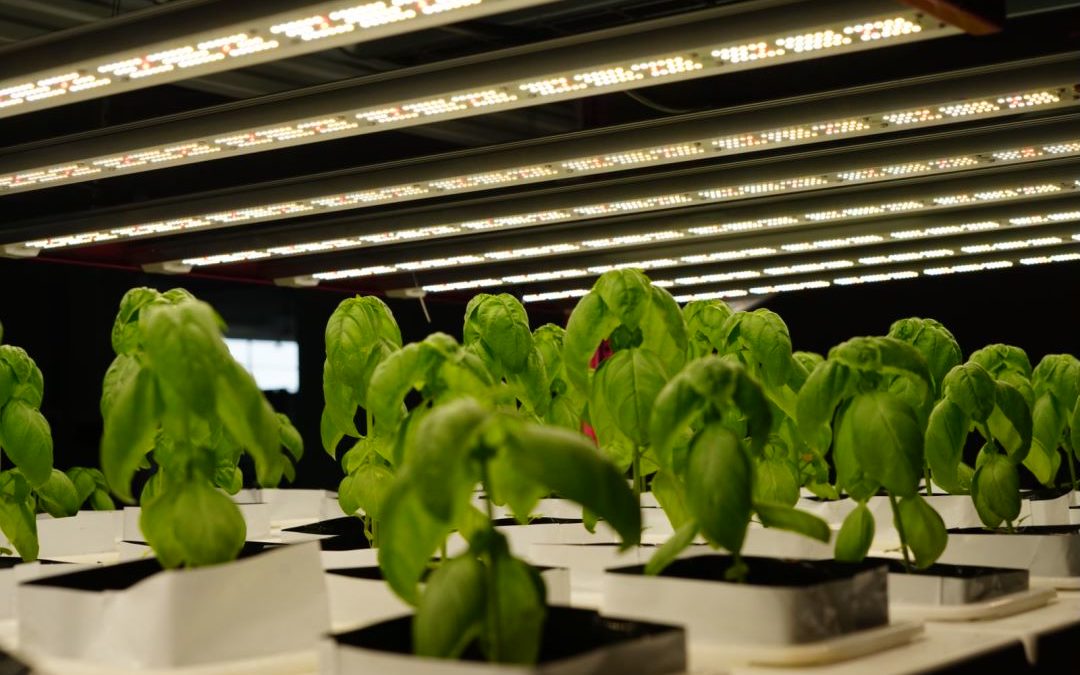Indoor farming has become increasingly popular in recent years, and LED grow lights have significantly made it possible. Finding the best LED grow light for your plants is crucial to their growth and overall health, there are a few key factors we need to consider when choosing an LED grow light.
What plant do you plan to grow?
Figuring out the light requirement of your plant is always the first task. Every type of plant has its light compensation point and light saturation point, if you give them light less than its LC point, plants won’t grow well or even die, if you give them light way more than their LS point, it will cause waste and may burn the plants. Please refer to the picture below, see how photosynthesis goes during the light compensation point and light saturation point.
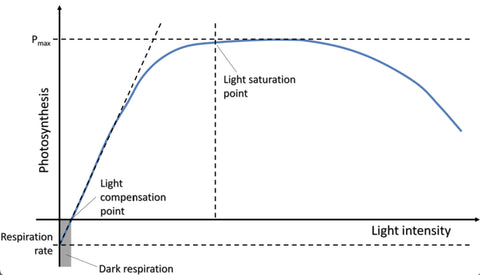
Light spectrum
Plant’s photosynthesis activity mostly occurs in the 400-700 nm visible range and converts CO₂ uptake and water into oxygen and glucose. We call PAR 400nm ~ 700nm full spectrum, it works well for most plants that naturally grow under sunshine, but blue and red light stimulates plant photosynthesis most, and the middle part of yellow light works less. See the picture below of how plants respond to the light.
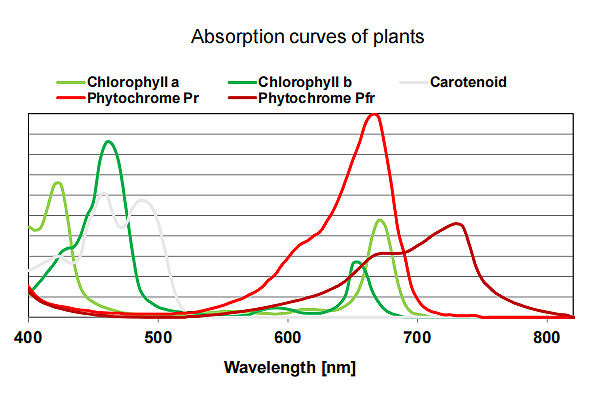
Light intensity
The light intensity is the amount of light your plants need, it will depend on their species and growth stage. Most plants need 10-12 hours of light per day during the vegetative stage and 12-14 hours per day during the flowering stage, remember plants also need sleep. We can measure it with DLI value, the daily light integral, the measurement formula is
DLI(mol/m2/d) = PPFD x light hours/day x 60 minutes x 60 seconds ÷ 1,000,000
Here is the DLI recommendation for some common indoor crops.
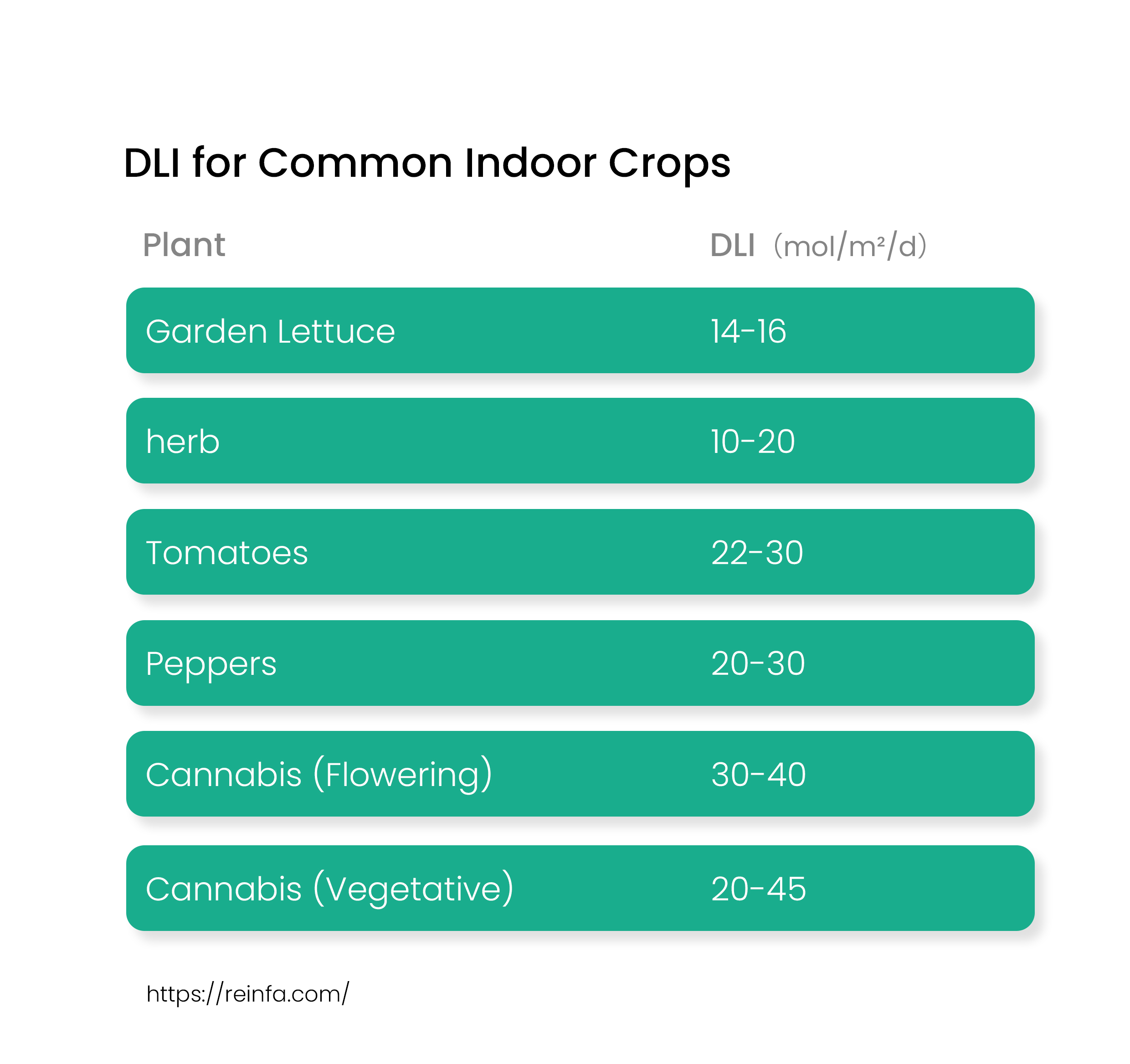
According to that formula, we can know the force between light hours and PPFD, for example, if we are going to grow lettuce indoor, and we are going to give 12 hours of light per day, then we need a light that can produce around 324 umol/m2s at a certain distance from light to the plant
14 DLI = 324 PPFD x 12 hours x 60 minutes x 60 seconds ÷ 1,000,000
PPFD value is affected by the distance between lights and plants, the closer to the light, the PPFD value is bigger, but the light distribution will be more uneven. That’s why we need to consider the light application, to get the ideal light fixture type and power.
Lighting application – where is the light fixture used for
The size of your grow space will impact the type of LED grow light you choose, if you do it in a greenhouse with a high roof, then the light will be hanging high, and you will need a more powerful LED grow light to provide adequate coverage; if you do in a vertical farm, the light will be hanging low, then a light with lower power will be better.
Light type
According to your grow space, you’ll know what type of light is best for you. Such as for a greenhouse light, a good light fixture shall be high power and a centralized body to create less shadow, because it can be hanging high, there is enough distance from light to the plants, and the light can be distributed evenly. But for vertical farm light, there is very limited space for hanging the light, a good design shall be low power and decentralized body, to distribute light equally at low distances. Refer to the picture below
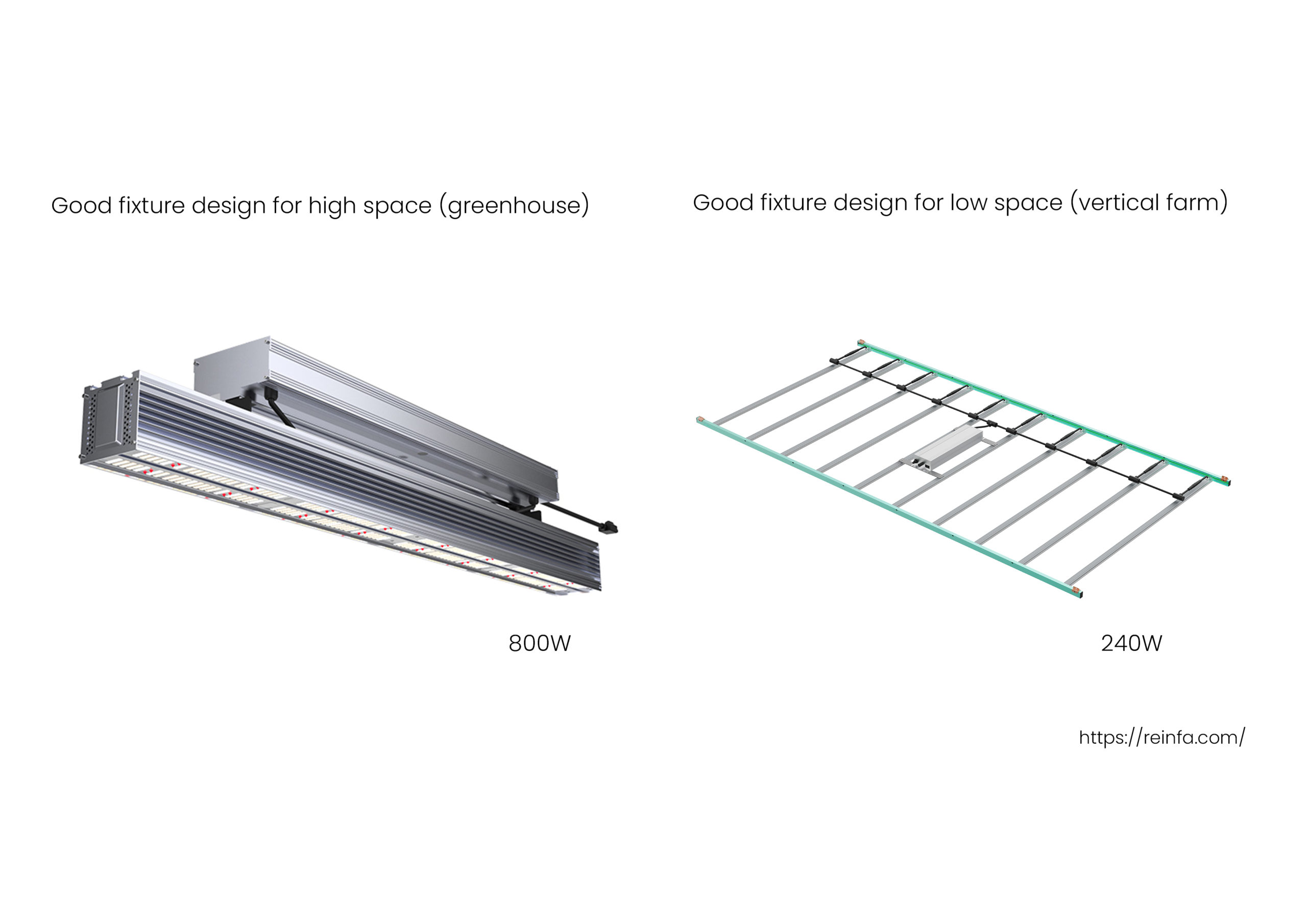
As you know the target PPFD for your plant and your grow space, it’s easy to check the light on the market and find the optimal performance one by following the key factors analysis above.
What’s your budget?
Of course, the best one is always not the one with the best performance data, we have to seek a balance between the performance and our budget. If you are planning to grow on a large scale, it is worth consulting a professional, to help you save time and find the ideal one.
Reinfa team of experts is experienced in horticulture, lighting, environmental control and more, and offers services in every stage of the process – from planning to implementation and tracking to troubleshooting, we provide bespoke vertical farming system design including irrigation systems, lighting, grow rack, and relevant products, to help you make the most out of farm facility investment. Welcome to contact us for a free lighting solution.
Overall, LED grow light is a heavy cost in indoor farming facility investment. Understanding the above key factors will help you find the best LED grow lights for your plants growing indoor. With the right LED grow light, to ensure your plants thrive in your indoor farming, and you’ll be on your way to a successful indoor farming experience.

